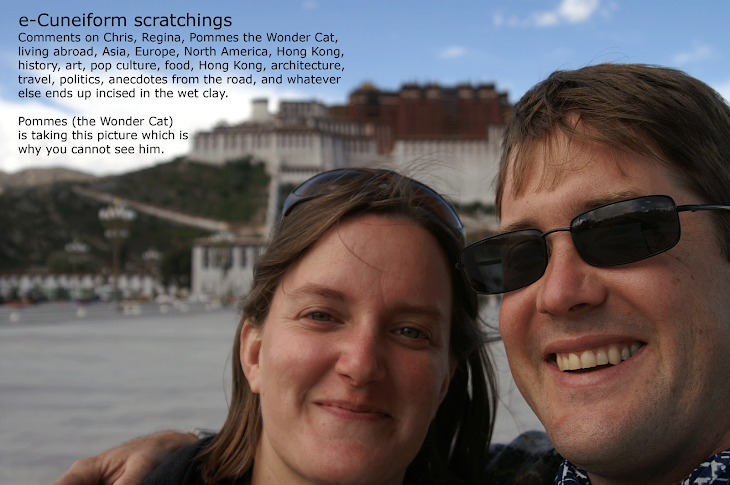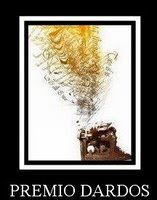 Dear Gentle Reader,
Dear Gentle Reader,This week the 3WW writing community received these three words to ignite inspiration: drink, feeble, and predict.
I find these three words difficult, but, I proffer three haiku (OK, senryu), each with an American Sentence title.
So, without further ado... drink, feeble, and predict....
Drinking in her honey pot is better than in your cups, but, beware...Drink in her curves, butI predict her tequilalaced honey's feeble...
Tschuess,**A paraphrase of the title could be "If you are going to get drunk, make love not war, but, be careful..."For English as a second-language readers, a honey pot can be an attractive woman, but, really, it is a synecdoche as the honey pot itself refers to the salty-sweet sexual centre of a woman.To drink in a honey pot could mean to gaze at a beautiful woman. It could also be something more visceral, more graphic.The second half of the title, being in your cups, refers to drunken fighting (from the Apocrypha, I Esdras 3:22 "And when they are in their cups, they forget their love both to friends and brethren, and a little after draw out swords:").From there, after a title exhorting us to, when drinking, make love, not war, is a warning to be careful of the company that too much alcohol may bring...Sneering command to the old to stand aside and die, ignored, forlorn.Fade, senescent shade--predict thine obsolescence;drink feebly to death.Leary never dreamed of chemical precogs, but fascists did, with glee.Drink the future! Pre--dict, -pare, -judge, -kill. Keep: futurecrime feeble; us safe!**Timothy Leary (1920-1996) was a futurist and an American countercultural icon who is best known in the popular press for his advocacy of LSD (it was legal when he started his experiments in consciousness-raising with LSD) and for the phrase, that he popularized, "Tune in, turn on, drop out".Though Dr. Leary was anti-establishment, the establishment took note and undertook its own tests on hallucinogenics to see how they could manipulate patients' understanding of reality.This poem looks at the concept of a class of chemically-induced precognitives (precogs) and the use that they could be put to in search of pre-crime investigation, enforcement, and punishment.
Chris
And... ...the music for today is...
Click to hear Jean-Pierre Rampal, on flute, and Lily Laskine, on harp, play 'Kojo No Tsuki' ('Moon over the ruined castle') from 'Sakura - Japanese Melodies for Flute and Harp'.
Amazon, to buy the same...
Tschuess,
Chris
Click to hear Jean-Pierre Rampal, on flute, and Lily Laskine, on harp, play 'Kojo No Tsuki' ('Moon over the ruined castle') from 'Sakura - Japanese Melodies for Flute and Harp'.
Amazon, to buy the same...
Tschuess,
Chris
Postscript about Haiku and American Sentences
First, technical definitions of the poetic forms I play with.
The English language version of the haiku is grammatically stricter (though semantically looser) than the original, Japanese form of this poetical form.
English Haiku are usually required to have three lines with 5 syllables on the first line, 7 syllables on the second line and 5 syllables on the final line.
The American Sentence is a poetical form structurally closer to the Japanese haiku format in some ways. It requires 17 syllables in one sentence and was created by the American poet Allen Ginsberg.
Yes, I know that there are content issues regarding what topics are permissible in Japanese haiku (Yes, I know that I write senryu, not haiku, subject-wise.) and that Japanese poets don't count syllables as they are generally understood in English.
I am not overly concerned.
If you are, I am sure I have discussed it sometime before. Check the haiku topic listing and have fun.















